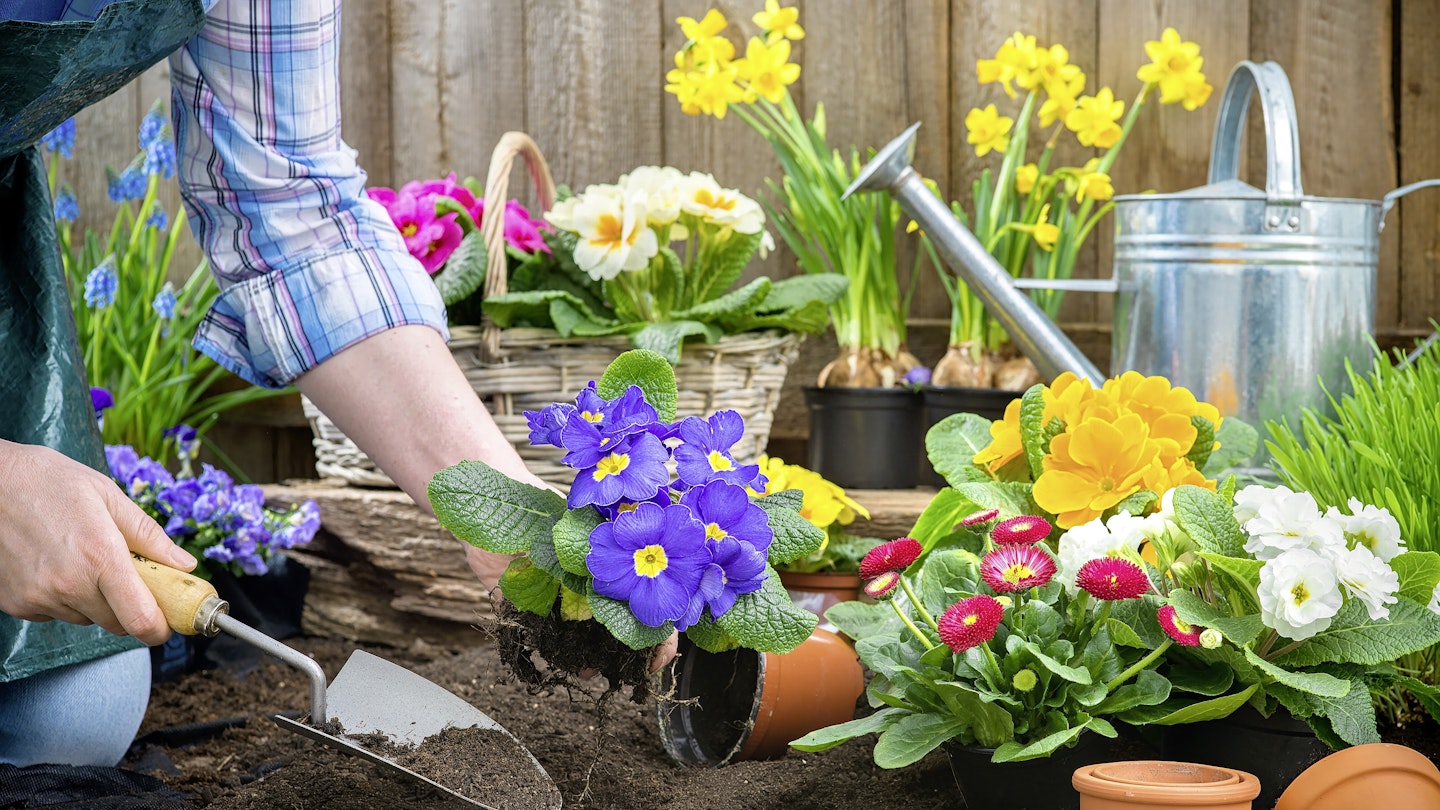The appearance of the pale lemon flowers of primroses in early spring is a heart-warming sight that raises the spirts and heralds the start of a new gardening year. The name comes from the Latin prima rosa, meaning first flower, referring to the fact that primroses can, during mild spells, bloom as early as January.
This native wildflower is a member of the primula family, one of the most diverse groups of plants with around 450 different species that grow in a range of habitats, mainly across the northern hemisphere. This means if you’re looking for a plant for a meadow or boggy area, sun or shade, or a border, container or rockery, there’s a primula to fit your requirements. There’s even one, Primula obconica, which can be grown as a houseplant.
Most are hardy, easy to grow and range from tiny alpines to the tall stems of Primula florindae (Tibetan cowslip), which can reach over 1m (3¼ft); they also come in a fabulous array of colours. Generally primulas are seen as spring-flowering plants but there are some that bloom later in the year, and because these will grow in shade they’re useful for brightening up the planting underneath deciduous trees, which can lack interest during the summer months.
Many primulas also make surprisingly good cut flowers, lasting seven to 10 days in a vase. The ones with long stems are the best, but even primroses can be picked – just make sure you cut as much of the stem as possible before popping them in a small vase.
Growing tips
Primulas thrive in moist but well-drained soil, although some, such as candelabra primulas, are happy growing in the more waterlogged conditions of a bog garden or by a pond. Most prefer acid to neutral soil, but cowslips will be happy with chalkier, alkaline soil. They benefit from the addition of well-rotted garden compost, or ideally leaf mould, to the planting area, as this will hold onto moisture and create the friable soil in which their roots will thrive. While primulas will be happy with spring sunshine, most need shade from the heat of the summer sun (cowslips are an exception), so plant where deciduous trees and shrubs will provide protection.
One of the pests that’s partial to primulas are vine weevils, which like to feed on the roots; they can be a particular problem for container-grown plants. The larvae and beetles of the vine weevil prefer old, woody roots, so dividing primulas every two or three years will make the roots less appealing. Division will also reinvigorate the plants, making them more floriferous the following year. Watch out for slugs and snails, too.
Propagating your plants
■ To increase your collection of primulas, divide plants after flowering or in early autumn. Replant in soil improved with leaf mould or compost and keep them well watered until they’ve established.
■ Seeds are best sown when they’re fresh rather than dried. Fill a seed tray or modules with seed compost. Carefully open the seed pods with your fingers, remove the seeds, positioning them on the surface of the compost and leave uncovered. Water, place in a shady spot and keep the compost moist. Germination may not take until the following spring.
Primulas to try
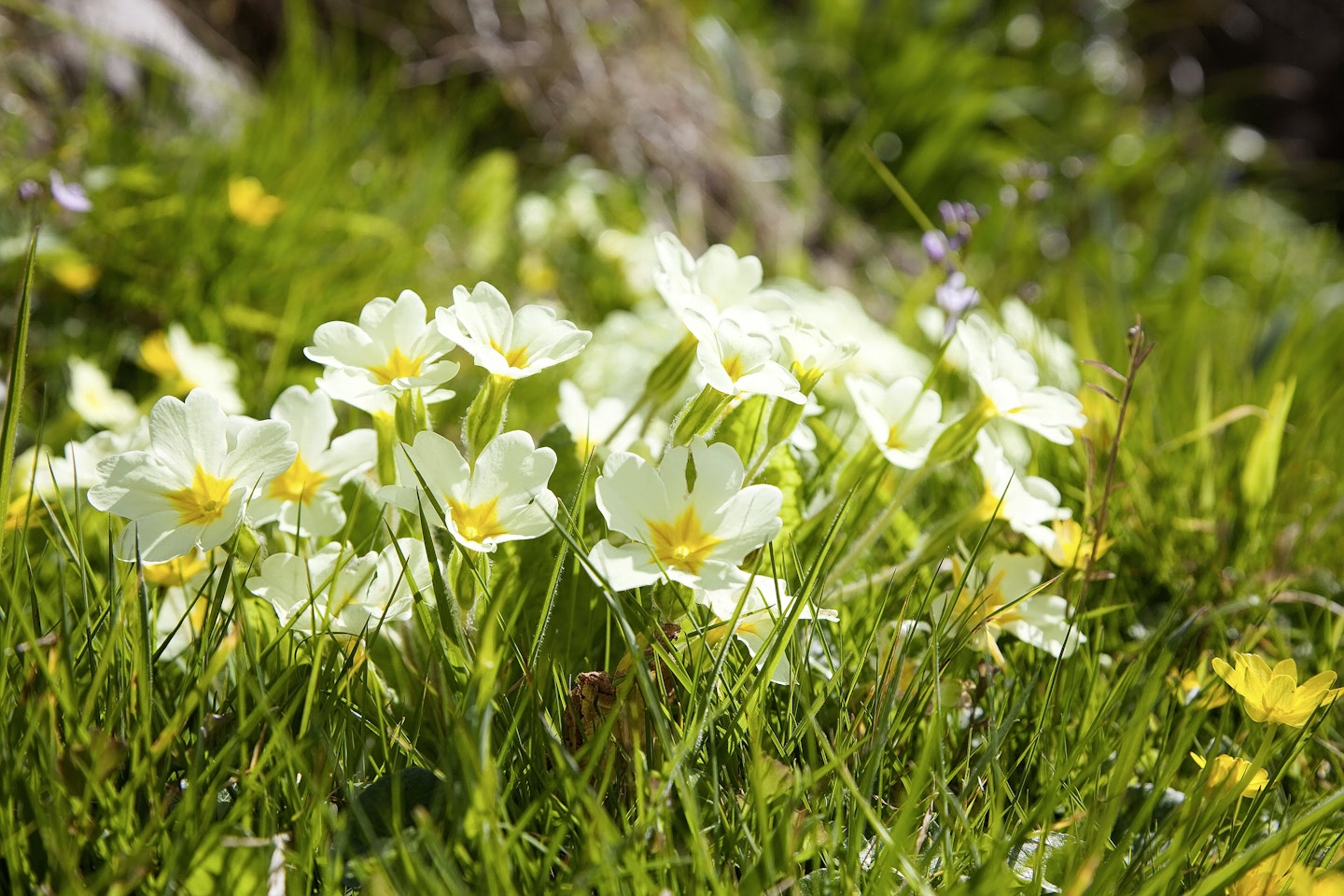 1 of 5
1 of 5Primula vulgaris
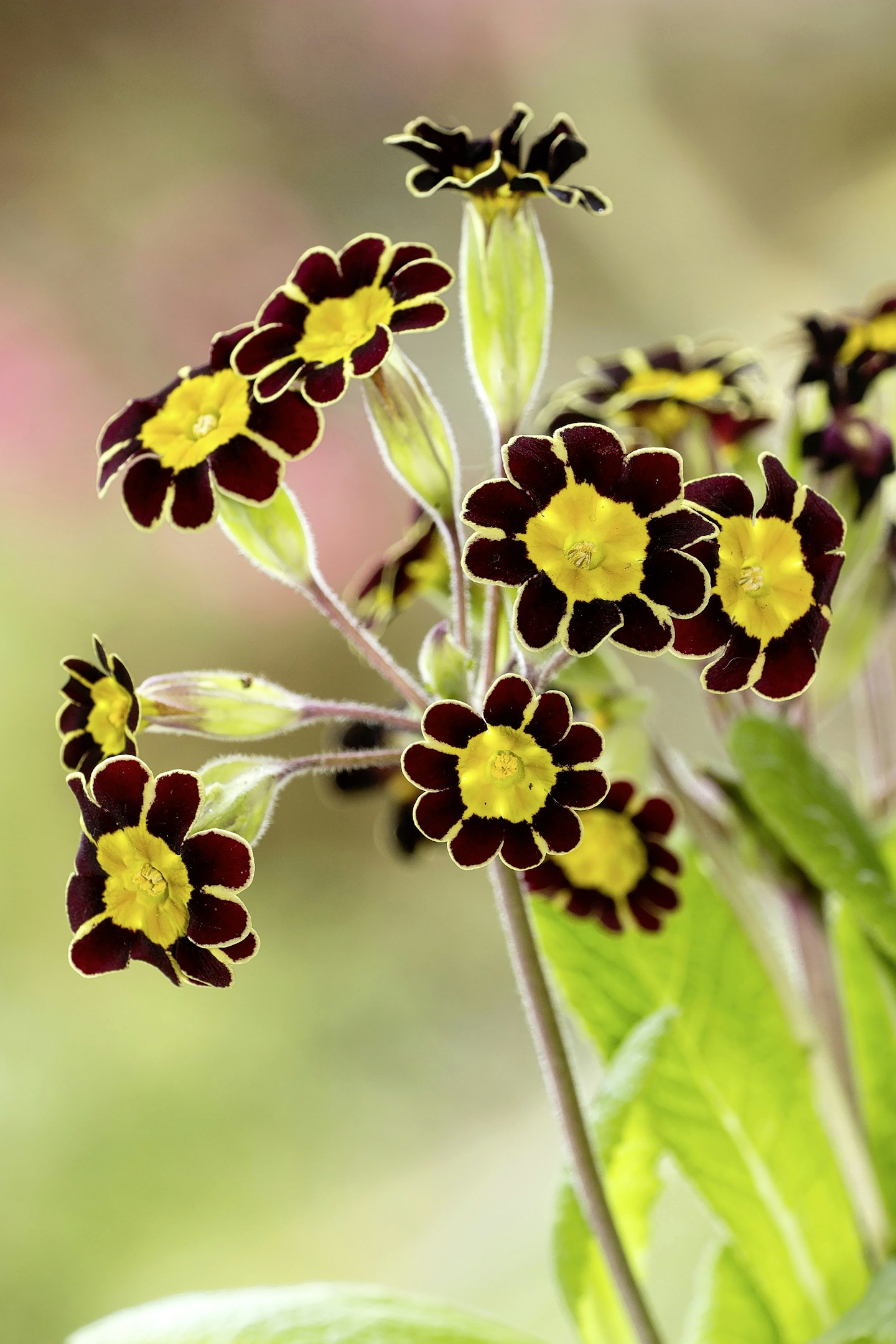 2 of 5
2 of 5Primula ‘Gold-laced’
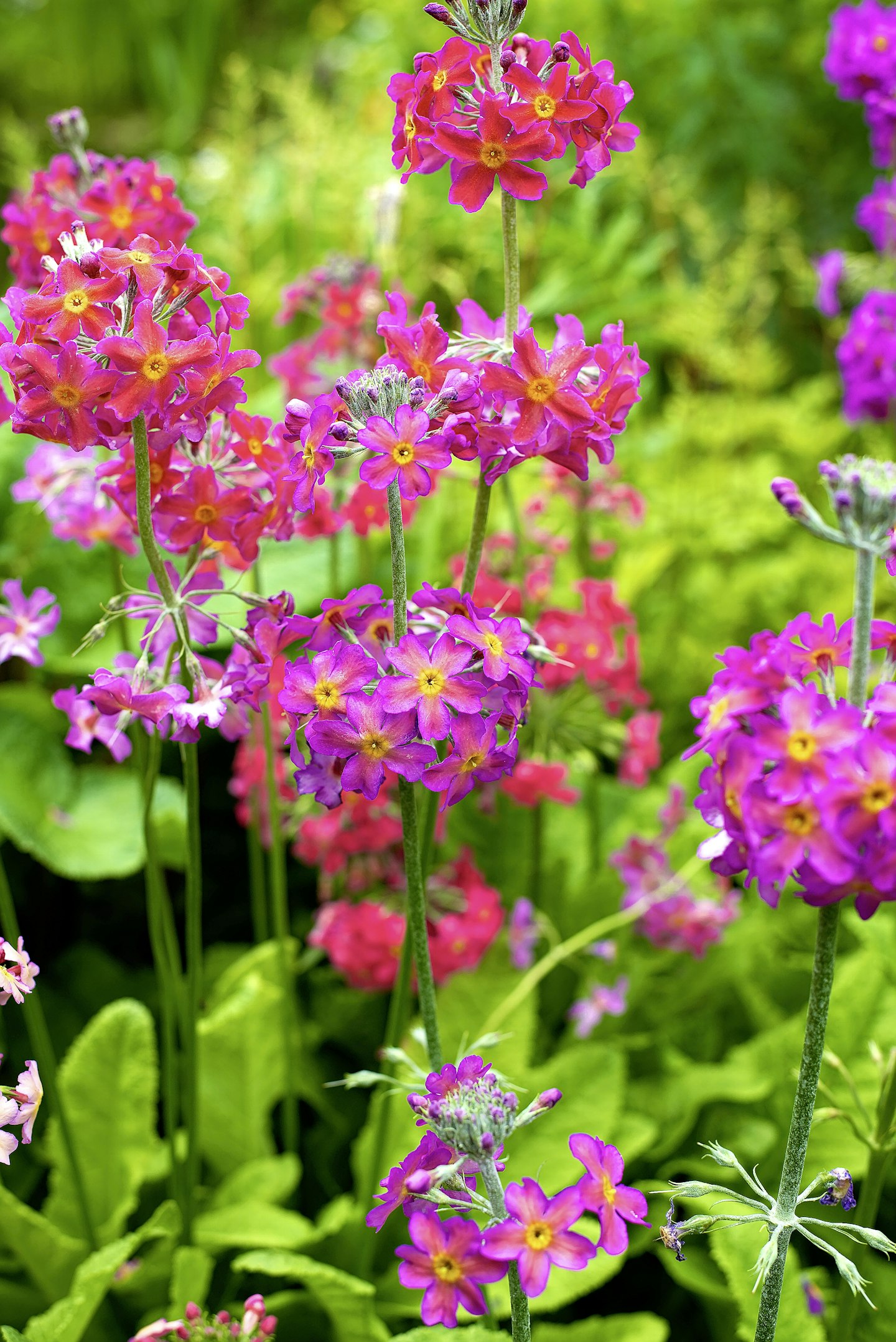 3 of 5
3 of 5Primula bulleyana
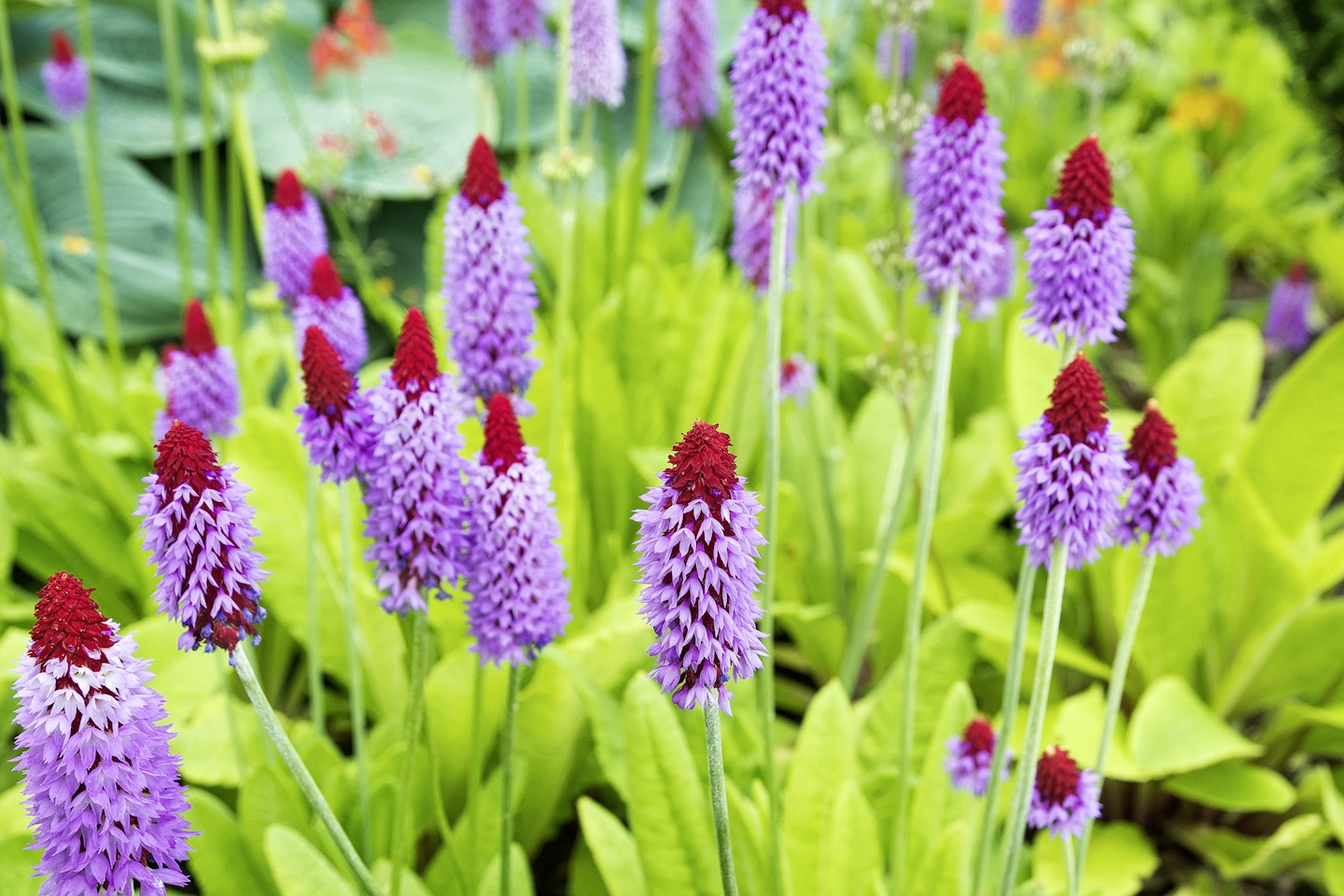 4 of 5
4 of 5Primula vialii
 5 of 5
5 of 5Primula florindae
Ones to try
Woodland border: Primula vulgaris AGM – a classic spring perennial to plant at the base of a hedge or under a deciduous tree or shrub. It forms low-growing mounds of foliage above which delicate, pale yellow flowers emerge, generally between March and April. H: 10cm (4in), S15cm (6in).
Border edging: Primula ‘Gold-laced’ – polyanthus-type primrose that has exquisitely delicate flowers with garnet red, sometimes almost black, petals edged in gold, surrounding bright yellow centres. Perfect for spring pots or the edge of borders. H: 20cm (8in), S: 15cm (6in).
Moist soil: Primula bulleyana AGM – this candelabra primula is ideal for bog gardens or by the edge of a pond, where the whorls of orange-yellow flowers will appear from April–June. It will readily self sow. H: 60cm (2ft), S: 20cm (8in).
Quirky interest: Primula vialii AGM – also known as the orchid primrose for its pyramid-shaped flower heads, which come in a colour-clashing combination of red buds that open to reveal lilac blooms from June–July. Plant in part shade. H: 60cm (2ft), S: 25cm (10in).
Summer shade: Primula florindae AGM – the Tibetan cowslip has towering stems topped with pale yellow, sweetly scented flowers. It blooms from July–August and is happy in shade, extending the season of interest in a woodland border. H: 1.2m (4ft), S: up to 1m (3¼ft).
